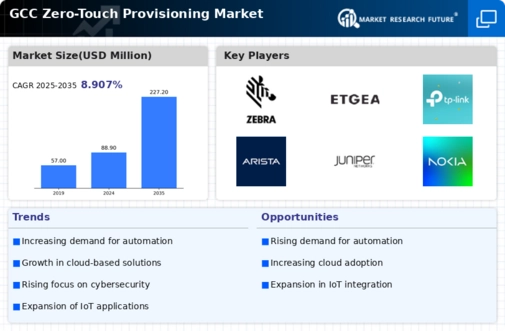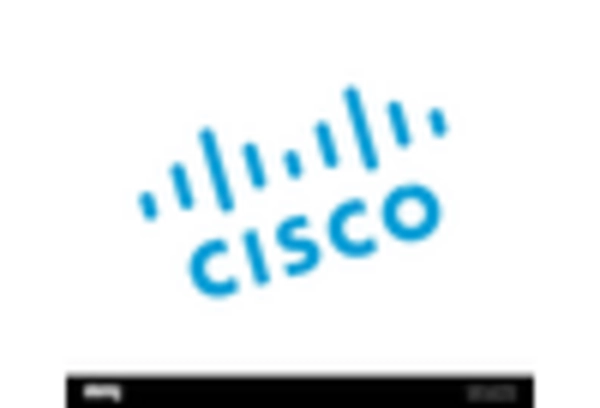Rising Adoption of IoT Devices
The proliferation of Internet of Things (IoT) devices in the GCC region is a key driver for the zero touch-provisioning market. As organizations increasingly deploy IoT solutions, the need for efficient device management becomes paramount. Zero touch-provisioning enables seamless integration and configuration of these devices, reducing manual intervention. According to recent data, the number of IoT devices in the GCC is projected to reach 1 billion by 2026, indicating a compound annual growth rate (CAGR) of approximately 30%. This surge necessitates robust provisioning solutions, thereby propelling the zero touch-provisioning market forward. Furthermore, the ability to manage devices remotely enhances operational efficiency, making zero touch-provisioning an attractive option for businesses looking to streamline their IoT deployments.
Regulatory Compliance and Standards
The regulatory landscape in the GCC is becoming increasingly stringent, which is driving the demand for zero touch-provisioning solutions. Organizations are required to comply with various standards and regulations related to data security and privacy. Zero touch-provisioning facilitates compliance by ensuring that devices are configured according to established guidelines from the outset. This proactive approach minimizes the risk of non-compliance and potential penalties. Recent reports indicate that businesses face fines of up to €10 million for data breaches, underscoring the importance of adhering to regulations. As companies seek to mitigate compliance risks, the zero touch-provisioning market is likely to see heightened interest and investment in provisioning solutions that align with regulatory requirements.
Shift Towards Cloud-Based Solutions
The ongoing transition to cloud-based solutions in the GCC is significantly impacting the zero touch-provisioning market. As organizations migrate their operations to the cloud, the need for efficient provisioning methods becomes critical. Zero touch-provisioning aligns well with cloud environments, allowing for automated device management and configuration without physical intervention. This trend is supported by data indicating that cloud adoption in the GCC is expected to reach 80% by 2027. The scalability and flexibility offered by cloud solutions further enhance the appeal of zero touch-provisioning, as businesses can easily adapt to changing demands. Consequently, the zero touch-provisioning market is poised for growth as more organizations embrace cloud technologies.
Cost Efficiency in Network Management
Cost considerations play a pivotal role in the growth of the zero touch-provisioning market within the GCC. Organizations are increasingly seeking ways to optimize their network management expenses. Zero touch-provisioning offers a solution by automating the configuration and deployment processes, which can lead to substantial cost savings. Studies indicate that companies implementing zero touch-provisioning can reduce operational costs by up to 25%. This financial incentive is particularly appealing in a competitive market where businesses strive to maximize their return on investment. As the demand for cost-effective solutions rises, the zero touch-provisioning market is likely to experience significant growth, driven by organizations aiming to enhance their financial performance while maintaining high service quality.
Enhanced User Experience Expectations
In the GCC, customer expectations regarding user experience are evolving rapidly, influencing the zero touch-provisioning market. As consumers demand faster and more reliable services, businesses are compelled to adopt solutions that facilitate quick and efficient device provisioning. Zero touch-provisioning addresses this need by enabling immediate access to services without the need for manual setup. This capability not only improves customer satisfaction but also fosters brand loyalty. Market analysis suggests that companies prioritizing user experience can see an increase in customer retention rates by as much as 20%. Consequently, the zero touch-provisioning market is positioned to thrive as organizations strive to meet and exceed user expectations in an increasingly digital landscape.

















Leave a Comment